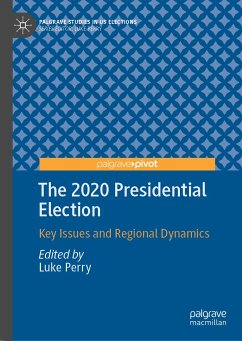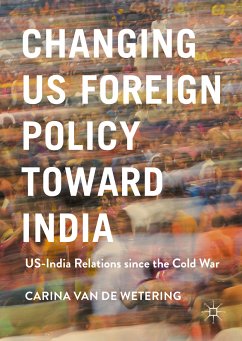
Polarization and US Foreign Policy (eBook, PDF)
When Politics Crosses the Water's Edge
Redaktion: Friedrichs, Gordon M.; Tama, Jordan
Versandkostenfrei!
Sofort per Download lieferbar
104,95 €
inkl. MwSt.
Weitere Ausgaben:

PAYBACK Punkte
52 °P sammeln!
Polarization in the United States has been on the rise for several decades. In this context, few observers expect politics today to stop "at the water's edge," as the old cliché goes. But key questions about the relationship between polarization and US foreign policy remain to be fully answered. To what extent are American ideas about foreign policy now polarized along partisan lines? How is polarization changing the foreign policy behavior of the US Congress and President? And how is polarization altering the effectiveness of US foreign policy and influencing America's role in the world? Thi...
Polarization in the United States has been on the rise for several decades. In this context, few observers expect politics today to stop "at the water's edge," as the old cliché goes. But key questions about the relationship between polarization and US foreign policy remain to be fully answered. To what extent are American ideas about foreign policy now polarized along partisan lines? How is polarization changing the foreign policy behavior of the US Congress and President? And how is polarization altering the effectiveness of US foreign policy and influencing America's role in the world? This edited volume explores these questions and more, bringing together existing knowledge as well as considering how the political dynamics and execution of US foreign policy may evolve in the years ahead.
Dieser Download kann aus rechtlichen Gründen nur mit Rechnungsadresse in A, B, BG, CY, CZ, D, DK, EW, E, FIN, F, GR, HR, H, IRL, I, LT, L, LR, M, NL, PL, P, R, S, SLO, SK ausgeliefert werden.












